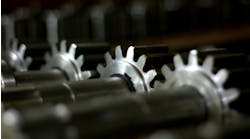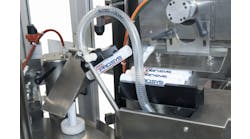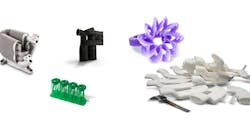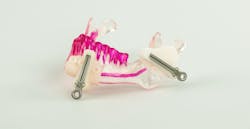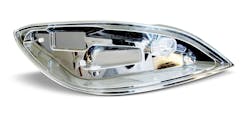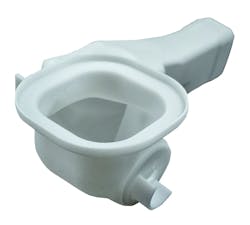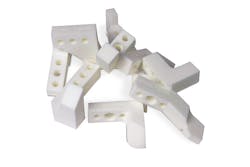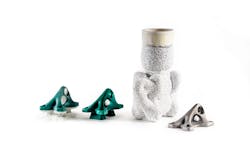Materials for additive manufacturing still remain confusing for many manufacturers looking into producing parts with the technology and that confusion can become a barrier to adoption. While many additive materials are as good as the traditional alternatives, I’ll be honest that some also have quite different properties than you might expect.
But there are times when that can be a good thing. Additionally, just because a 3D Printing material has the same or similar chemical composition as an injection-molded material, there is no guarantee that it will perform equivalently to its injection-molded cousin.
Doing a one-to-one comparison of, say, nylon/polyamide materials for additive compared to the same for injection molding could lead to an incorrect conclusion. There are many occasions where the material being used in injection molding is overkill for the part being produced, maybe because of what was available or just through habit by the shop floor team.
So knowing the design allowables for the part is key and can sometimes mean that an additive material might be better suited than the traditional alternative.
Reducing the Confusion
Just as traditional materials' properties are expressed in ASTM measurement standards, additive materials should be too. At 3D Systems all materials supplied have technical datasheets available that show the key performance properties by a number of metrics measured to ASTM standards. These starting points help manufacturers understand the true properties they are likely to achieve from a 3D-printed part.
Experts within the company are also on hand to help production engineers make the right choice of additive platform and material to meet the application in play as well as perform benchmarks.
What About Certification of the Materials and Processes?
For many industries, although noticeably in medical and aerospace, certification of materials and/or a machine may be critical. This takes a lot of time and experience and also includes ongoing testing during production to ensure material properties and machine settings remain valid.
However, hundreds of machines and materials have been successfully certified and, in addition, 3D Systems researchers working with manufacturers have been able to consistently reduce the time it takes to certify from years down to months in most cases.
A New Design Approach Becomes Valid
Rather than simply taking a CAD design for a part that would be injection molded and putting it into additive, one of the true values of additive manufacturing is that it enables the production of parts without the limitations of traditional production methodologies. This enables a new approach to product design that can result in, for example, significant part count reduction and reduced assembly processes.
The way the technology works plus access to multiple plastic and metal materials means that metal parts can be made far lighter in weight than has been the norm: Take a piston head that has always been highly machined out of a block of metal. Due to the machining process, these are heavy, solid metal parts even though the design allowables don’t need so much of a solid block.
Design for additive enables engineers to lightweight this solid block in a way that it retains its required strength, but at a fraction of the weight, thereby increasing the strength-to-weight ratio while decreasing manufacturing and operating costs. Imagine if you halved the weight of all the pistons in your engine while maintaining and perhaps even improving performance. How would that affect fuel consumption and wear-and-tear on the engine?
Parts That Require Chemical Resistance
Many plastic additive materials are capable of meeting the requirements of ISO 10993-01, USP Class VI, food handling, and flame retardancy certifications for aerospace. Plastic additive materials can be resistant to common industrial fluids such as diesel, ethanol, freon, machine oil, motor oils, gasoline, and more. This means these materials can be used where chemicals are present, for example, grips in robotic machines where hydrocarbons are present.
Better Disinfection of Parts
A number of materials from 3D Systems meet the requirements of USP Class VI and can be easily sterilized, making them potentially suitable for use in some medical applications where limited exposure to skin is required, such as surgical guides. Due to the way additive manufacturing works, custom medical devices become a reality, and that can reduce treatment times and improves treatment outcomes.
What Kinds of Applications Would be Valid for Additive?
Almost any application is valid for production using additive manufacturing but some have more value than others. Simply reproducing a part exactly as it would be produced in injection molding is always an option, however, it does not provide the best value for the technology.
So here are some great examples:
Rapid Prototyping
The original application for additive manufacturing was rapid prototyping but the materials and technologies have evolved over the years to really deliver superb value. Pretty much all additive technologies can, and are, used for prototyping from appearance models through to functional form and fit models, as well as investment casting patterns and metal prototypes.
One great example among the many is the use of Clear materials in Stereolithography (SLA) 3D printers for transparent parts. These can be anything from very fine-detailed lenses through to clear engine blocks to validate oil flow on a test rig.
High-quality elastomeric parts also make for great prototypes, enabling very rapid production of rubber-like parts to be able to test overmolding in parts, hand grips, and other products.
Materials such as Figure 4 FLEX-BLK 10 in the ultra-fast Figure 4 3D printer deliver parts that have exceptional durability and flexibility for polypropylene-like parts, and VisiJet Armor for the MulitJet (MJP) 3D printers can also be used to deliver and test snap-fit parts.
Tool-Free Bridge Production
Many manufacturers, automotive in particular, use Selective Laser Sintering (SLS) materials such as DuraForm ProX HST Composite to scale up initial production of parts until tooling is completed and mass production can begin. This is a fiber-reinforced nylon with excellent stiffness and high-temperature resistance. It's also non-conductive and RF transparent. Its properties are suitable for many parts and casings, or testing and use in rugged environments.
Custom Jigs and Fixture Production
Additive manufacturing delivers true-to-CAD parts directly from the design file which enables very fast design and production of custom jigs and fixtures for assembly, testing, and repair of parts.
An additive material such as Accura BlueStone is suitable and robust enough to be used for welding fixtures. Production of jigs and fixtures through this methodology eradicates the time required to hand-build custom fixtures, increases accuracy, and reduces assembly errors.
Press Tool Production
Used for both prototype and low-volume production tools, 3D printed parts are ideal for press tools. Since press tools tend to be quite simple, they are fast to produce and can be used for direct production of parts in volumes of several hundred. SLA, Figure 4, and MJP (MultiJet) 3D printers have a range of robust materials that can be used for press tools for hydroforming and vacuum forming, among others.
Investment Casting Patterns
Additive manufacturing enables the production of both prototype and production-grade investment casting patterns. Given the way additive works, casting patterns produced in this way can deliver casted parts that were previously regarded as ‘unmoldable’, with increased complexity and new and unusual shapes.
SLA QuickCast methodology enables the production of very large casting patterns relatively quickly and is often used in aerospace as well as turbine production. The MJP 2500 IC 3D printer with the VisiJet M2 ICast material delivers very fast production of wax investment casting patterns that drop seamlessly into the investment casting process.
For intricate casting projects such as jewelry and medical instrument micro casting, the ProJet MJP 2500W 3D printer, with VisiJet M2 Cast material makes the creation of casts easy and straightforward, enabling a new level of creativity and production speed for designers.
